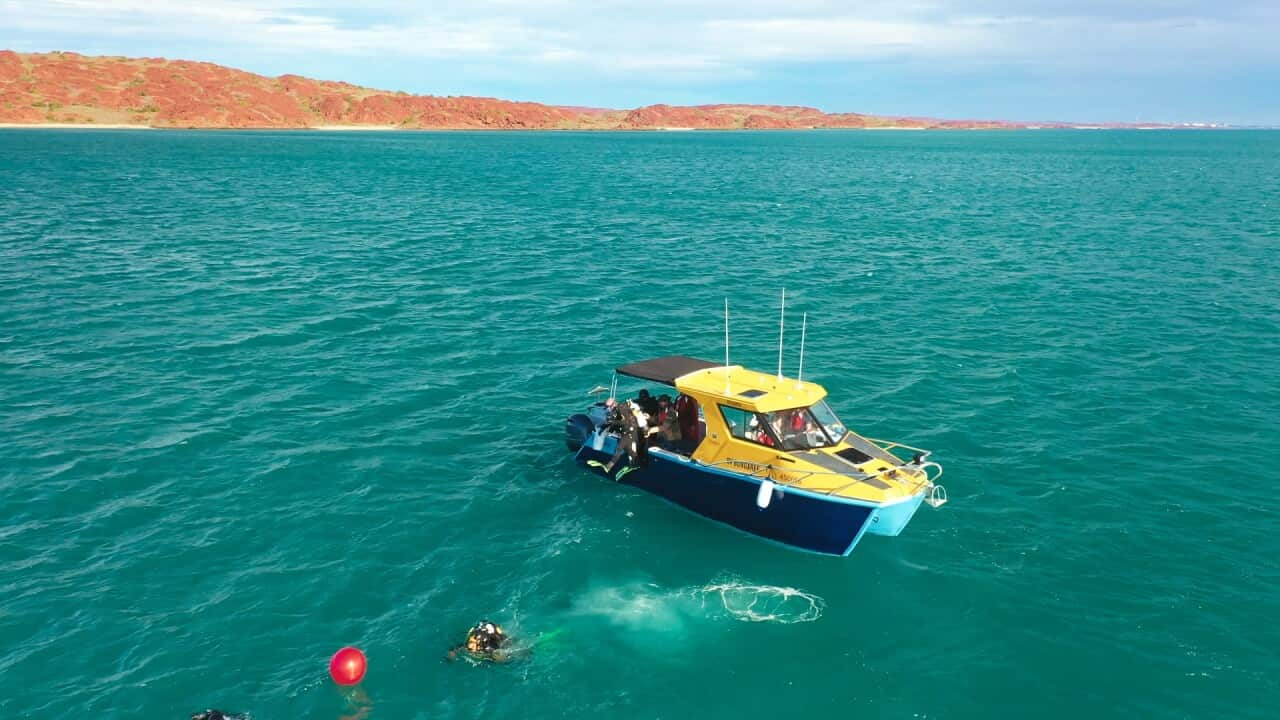Ron Poantumilui sees tiger prawn farming in his future, and he is excited by it.
The Senior Wurankuwu leader has been working with Tiwi Resources and CSIRO to build an industry on his homelands that lie on the western side of Bathurst Island.
“We want to build a tiger prawn farm in Wurankuwu,” he said.
“It will be good for my future generations to carry on.”
He’s travelled to Vietnam to see how it’s done. Smaller scale farms, with a lower density of prawns, are cost effective and manageable.
“I went there for 12 days to look at how they do their prawn farming and it was a good learning experience and beautiful country,” he said.
There are no jobs and no industry at this small Wurankuwu outstation, which the Tiwi Land Council suggests is home to around 50 people.
The population is dwindling, with many like Ron needing to move to the larger communities for access to work and health services.

Ron in Vietnam. Credit: Supplied
“It’s where we are from, it’s our country,” Ron Poantumilui explained.
“It’s better for us to move back home and work at home with our people and with outsiders who want to come and bring more jobs to the community.”
Researcher Tim Perrin says CSIRO has been exploring cost-effective models for prawn farming in the tropics since the COVID-19 lockdown.

CSIRO researcher Tim Perrin says that up north is a great environment for prawn farming. Credit: Laetitia Lemke
“There's always been a great opportunity here in Northern Australia, with so much untouched land and opportunities up here a great environment for tropical species.”
The CSIRO had decades of work in aquaculture to draw from.
“We kind of put two and two together and a couple of years later here we are,” Mr Perrin said.
Snaking ponds in Berry Springs near Darwin are teeming with Tiger Prawns as part of tests to create the most cost-effective and sustainable model for what’s known as ‘extensive farming’.
“They use extensive farming a lot in Vietnam,” CSIRO Researcher Mr Perrin said.
“Most of the industry in Australia is a semi-intensive industry, where you have got somewhere in the range of 70-20 prawns in every square meter of water, when we are talking extensively, we are talking more in the order of one to five.”

Ron applied his learnings of prawn farming techniques in Vietnam to see what they could look like in his community. Credit: Laetitia Lemke
Laser and drone technology is being trialled to deter predatory birds and to reduce the work needed for feeding across huge ponds.
The results are promising.
“The opportunities when we do figure it out is limitless,” Mr Perrin said.
“There’s a lot of things working against you but one of the things we are trying to focus on is working through each of those challenges that we know exist and then systematically finding a solution to each one and then applying them in different ways.”
It’s not the first time prawn farming has been suggested for the tropics, where salt water is in rich supply.
The Northern Territory, West Australian and federal governments are still smarting from multi-million dollar roads and infrastructure investment for a failed farming venture at Legune Station.
But researchers say there is real potential if it is done properly.
The next step for CSIRO is showing it can work at a commercial level.
“Tiwi Resources, Portamini Trust and CSIRO had a session at the Tiwi Land Council Office and we worked out what we wanted the actual project to look like in terms of on the infrastructure but also the benefits to Tiwi and the employment opportunity,” eNTITY1 project officer Anthony Venes said.

eNTITY1 project officer Anthony Venes says they're wanting to create a 'unique Tiwi product'. Credit: Laetitia Lemke
“We are not trying to mass produce a product we are trying to create a unique Tiwi product.”
Anthony Venes says the farms will be low density, with the prawns feeding mostly on natural elements in the water.
“If you want to buy a Tiwi Tiger Prawn then you know that this is where it’s coming from and this is what it is and there’s a story behind it.”
The next phase will be trying to attract funding for a commercial farm on the Tiwi Islands… and proving the co-led model prawn farming model can work.
CSIRO Researchers and Elders are confident that it will be a success, benefiting the small community of Wurankuwu and transforming the prawn farming industry across northern Australia.

Ron is working with Anthony to create opportunities for his community. Credit: Laetitia Lemke













